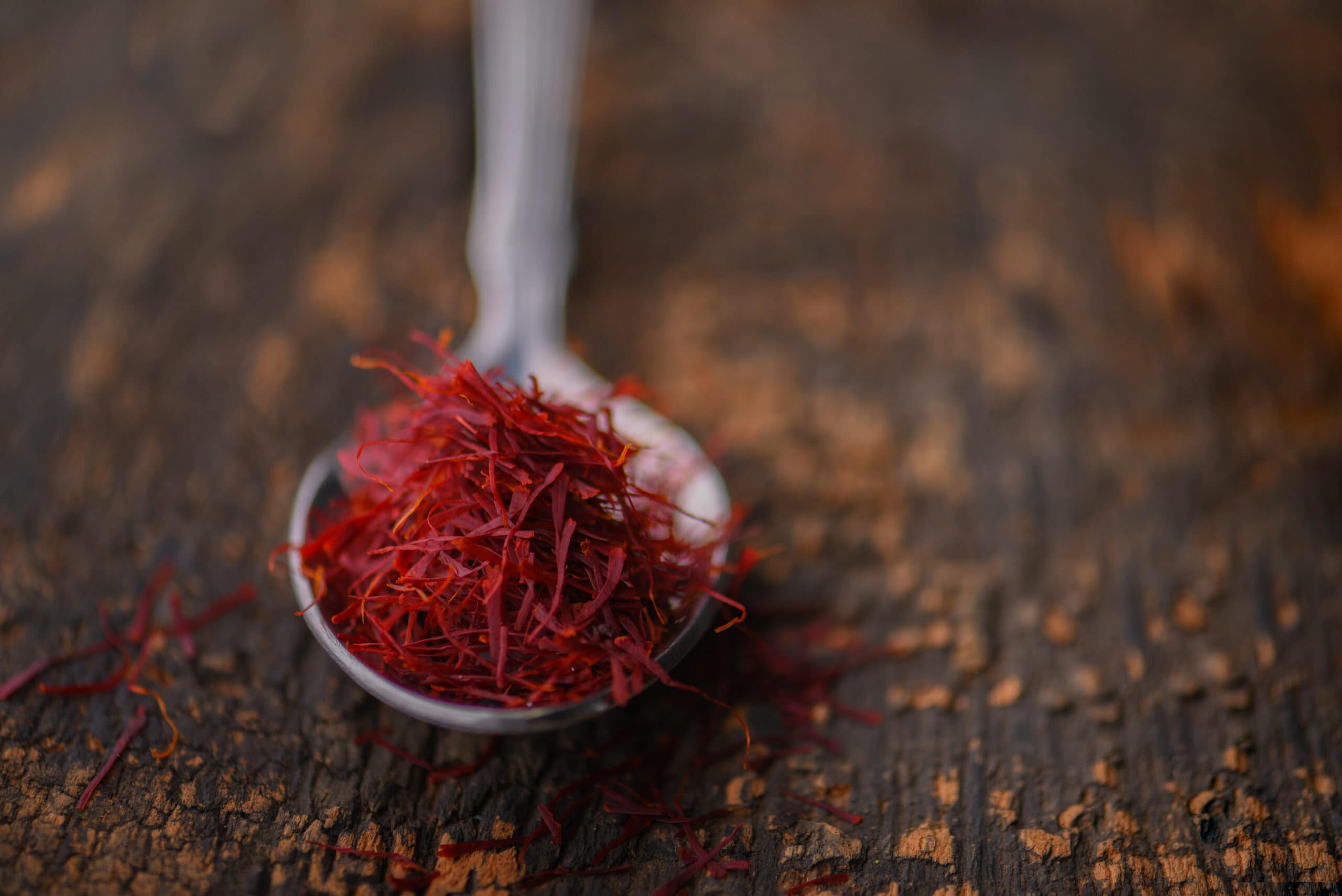Saffron is widely purported to be the most expensive spice in the world. With that in mind, it’s worth taking a look at two common forms of the spice: Saffron threads which are more expensive, and saffron powder which is cheaper with less work on your part.
Saffron threads are the whole stigma of the saffron crocus flower and are prized for their intense flavor and vibrant color. Saffron powder, on the other hand, is a ground form of saffron threads, which is more convenient but can be less potent.
Saffron threads are typically considered of higher quality and are preferred for dishes where their distinct flavor and appearance are crucial, while saffron powder is often used for convenience in recipes where saffron’s flavor and color play a supporting role.
Saffron Threads And Saffron Powder Head To Head
Here’s a table comparing saffron threads and saffron powder from a culinary perspective:
| Characteristic | Saffron Threads | Saffron Powder |
|---|---|---|
| Taste and Aroma | Intensely flavorful with a unique floral and earthy notes | Similar flavor, but can be slightly milder due to increased surface area. |
| Appearance | Bright red threads with a deep red color. | Fine powder with a rich orange-red hue. |
| Uses | Ideal for dishes where the saffron flavor and visual appeal are prominent, such as paella, risotto, and biryani. | Convenient for mixing into liquids or dry rubs. Common in baking and dishes where saffron color is desired. |
| Cost | More expensive due to the labor-intensive harvesting process. | Often more affordable per ounce than saffron threads. |
| Storage | Store in an airtight container in a cool, dry place away from light and moisture. | Store in an airtight container in a cool, dry place away from light and moisture. |
| Versatility | Best for infusing flavors and color in liquids or dishes with longer cooking | Better suited for uniform distribution in recipes. |
| Preparation | Threads should be soaked in warm liquid before use. | Easily measured and mixed into recipes. |
Keep in mind that the choice between saffron threads and saffron powder depends on your specific culinary needs and preferences.
How To Use Saffron Threads And Saffron Powder In Food Dishes
Here are some examples of food dishes where saffron threads and saffron powder can be used:
Saffron Threads
- Paella: Saffron threads are a must in this classic Spanish rice dish, imparting a rich golden color and distinct flavor.
- Risotto: Saffron threads elevate the creamy texture and taste of a saffron-infused risotto.
- Biryani: In this fragrant Indian rice dish, saffron threads add both color and fragrance.
- Saffron-infused Broths: Saffron threads can be used to flavor seafood broths or bouillabaisse.
- Saffron-infused Desserts: They are perfect for making saffron-infused ice creams, custards, or panna cotta.
Saffron Powder
- Baking: Saffron powder is more convenient for adding saffron flavor and color to cakes, cookies, and bread.
- Dry Rubs: Incorporate saffron powder into dry rubs for grilled meats or vegetables.
- Marinades: It can be mixed into marinades for chicken, lamb, or fish, infusing them with a subtle saffron aroma.
- Sauces and Dressings: Saffron powder can be easily blended into sauces, salad dressings, or aioli for a consistent flavor.
- Saffron-infused Rice: For dishes like saffron rice, where an even distribution of color and flavor is desired.
Remember that saffron powder is more suitable when you need an even dispersion of saffron throughout your dish, while saffron threads are often used when the visual appeal and presentation are crucial.
Further Saffron Facts And Tips To Consider
Here are some additional details about saffron threads and powder:
- Origins: Saffron comes from crocus flowers, mainly grown in Spain, Iran and India. Each flower yields just 3 stigma threads.
- Crocus Variety: Most saffron comes from Crocus sativus. For maximum color and flavor, seek out fresh seasonal harvests.
- Harvesting: Threads are hand-plucked in fall from just-opened flowers then immediately dried. This labor-intensive process makes saffron very expensive.
- Storage: Keep threads or powder in an airtight dark container in a cool, dry place to maintain optimal potency. Refrigeration extends shelf life.
- Preparation: Soak threads in warm liquid like stock or water for 10-15 minutes before using to fully release flavors and dyes.
- Safety: Despite deep color, saffron is generally recognized as safe. May cause contact dermatitis in sensitive individuals when handling threads.
- Common dishes: Saffron enhances Spanish rice dishes, paellas, risottos, bouillabaisse, tagines and is essential in some desserts like Persian saffron ice cream.
- Quality Factors: Intense color and lack of bitterness indicate high quality saffron. Avoid if weak or yellow-tinged.
Final Thoughts
Here are the main differences between saffron threads and saffron powder:
- Form: Saffron threads are the dried stigma (Thread-like part of the flower) of crocus flowers. Saffron powder is made by grinding the threads into a fine orange-red powder.
- Flavor intensity: Powder has a more concentrated flavor since it dissolves quickly. Threads need to be soaked/cooked to fully release flavors so some prep work is required on your part.
- Color impact: Threads add delicate orange strands. Powder uniformly colors and stains food a bright saffron yellow.
- Strength required: More threads are needed than powder to color/flavor foods due to concentrated nature of powder.
- Shelf life: Properly stored threads last up to 1 year. Powder retains peak flavors for 3-6 months before degrading.
- Uses: Threads are preferred for rice dishes and applications where appearance matters. Powder blends in quickly for baking, soups etc.
- Scent: Fresh threads have a stronger saffron aroma that can fade in powder over time.
So in summary, threads maintain qualities longer but powder dissolves quicker for instant color and flavor.

